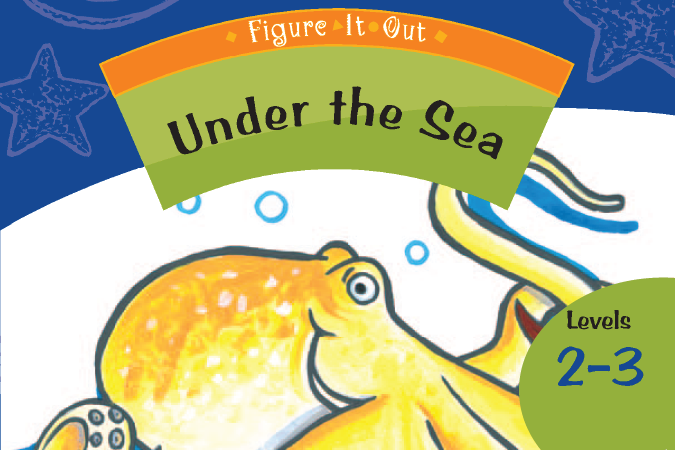Scaling up
This is a level 2 algebra activity from the Figure It Out theme series. A PDF of the student activity is included.

About this resource
Figure It Out is a series of 80 books published between 1999 and 2009 to support teaching and learning in New Zealand classrooms.
This resource provides the teachers’ notes and answers for one activity from the Figure It Out series. A printable PDF of the student activity can be downloaded from the materials that come with this resource.
Specific learning outcomes:
- Continue a sequential pattern.
Scaling up
Achievement objectives
NA2-8: Find rules for the next member in a sequential pattern.
Required materials
- Figure It Out, Level 2–3, Theme: Under the Sea, "Scaling up", page 15
- square tiles
See Materials that come with this resource to download:
- Scaling up activity (.pdf)
Activity
There are many ways that students can count the number of square tiles in each fish. Most will use one-by-one counting if you do not encourage them to explore other interesting ways to count.
Below are some methods that could be used to count.
Using symmetry:

- There are four tiles on this line of symmetry.
- 2 x 5 = 10 tiles are not on the line of symmetry.
- Total: 10 + 4 = 14 tiles.
Using composite blocks:

- 4 + 4 + 6 = 14 tiles.
Multiplication:

- (3 x 3) + 3 + 2 = 14 tiles (or 4 x 3 + 2).
Using the larger enclosing square and noting the missing and additional tiles:

- (4 x 4) + 2 – 4 = 14 tiles.
Students should try to use equal additions or multiplication to simplify the task of counting the scales (square tiles). A table using multiplication is illustrated in the Answers section.
A grandparent fish will build on the pattern of body, fins, and tail shown in the other fish.


The total number of scales on a grandparent fish is 25 + 6 + 6 + 10 = 47.
1.
Baby fish have 5 scales, teenage fish have 14 scales, and adult fish have 28 scales.
2.
There are 137 scales. Students could work this out in a table using multiplication:
Fish |
Number |
Scales |
Total |
|---|---|---|---|
Baby |
5 |
5 |
25 |
Teenage |
4 |
14 |
56 |
Parent |
2 |
28 |
56 |
Total |
|
|
137 |
3.

The quality of the images on this page may vary depending on the device you are using.


